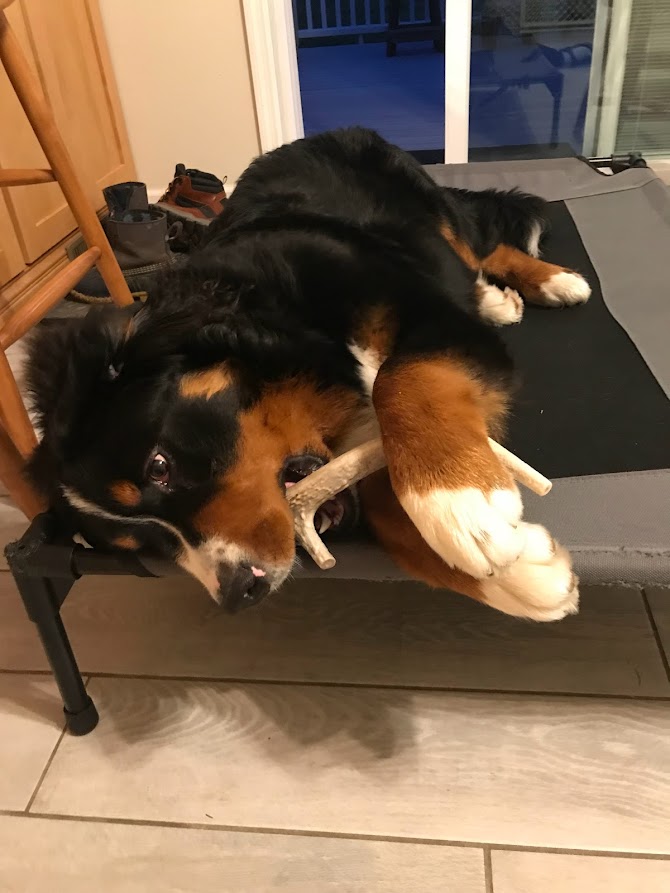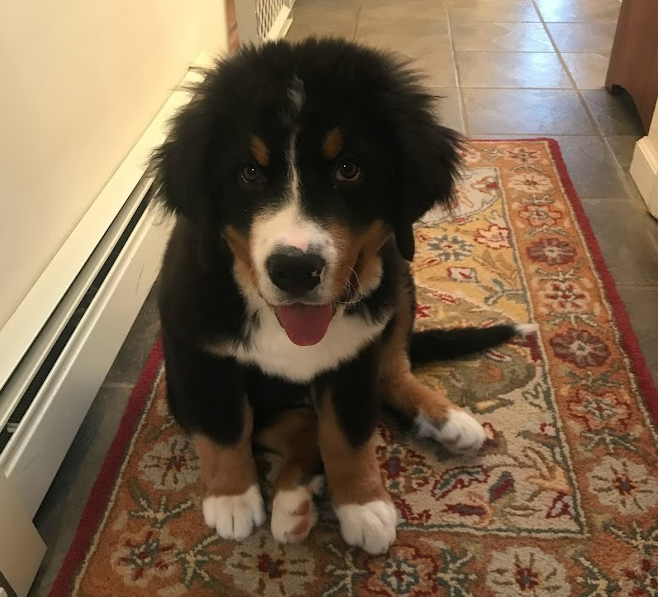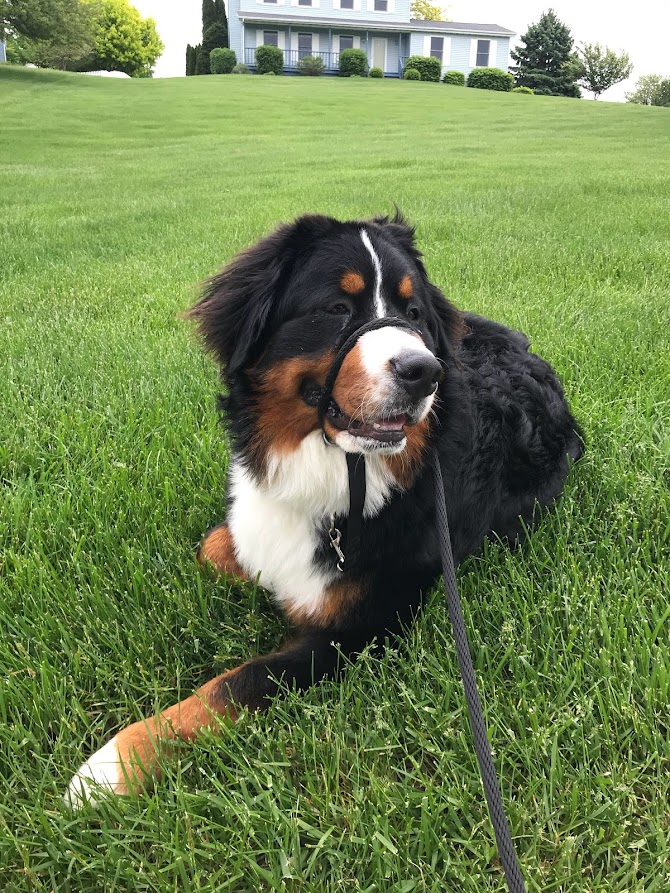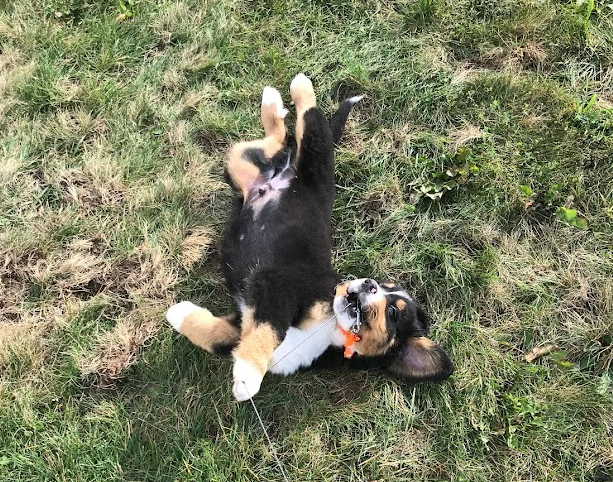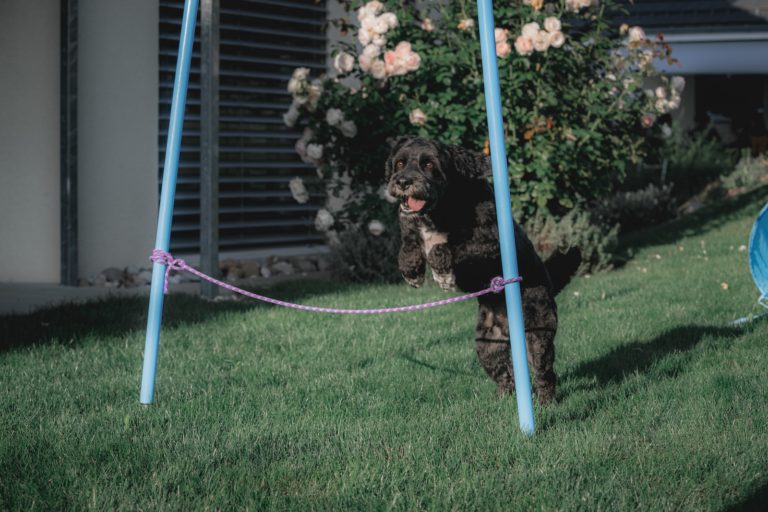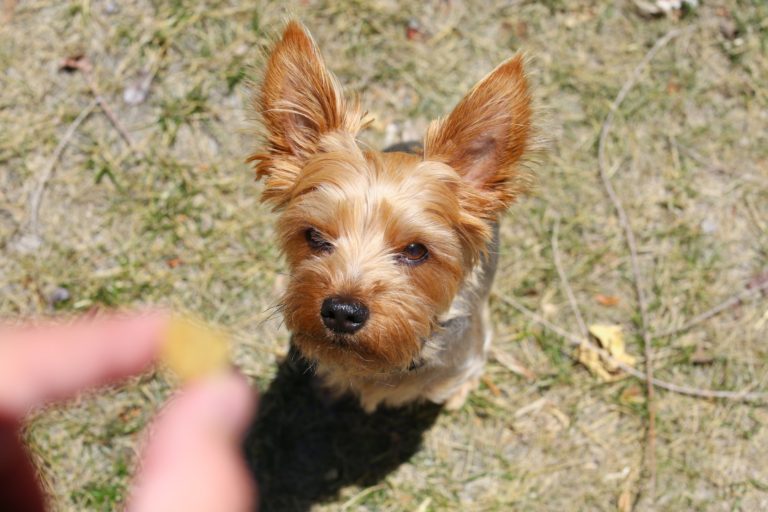A Practical Command for Excited Dogs: Place
The Place command is not widely known amongst the dog owner community, unless you seek out dog training. It’s one of the top ten commands any trainer would recommend you train you dog. It can easily be used in everyday life. Most dog owners could probably avoid some unwanted behaviors if they learned how to use Place.
If you are looking for an easy skill that will help chill your dog out, check out Place.
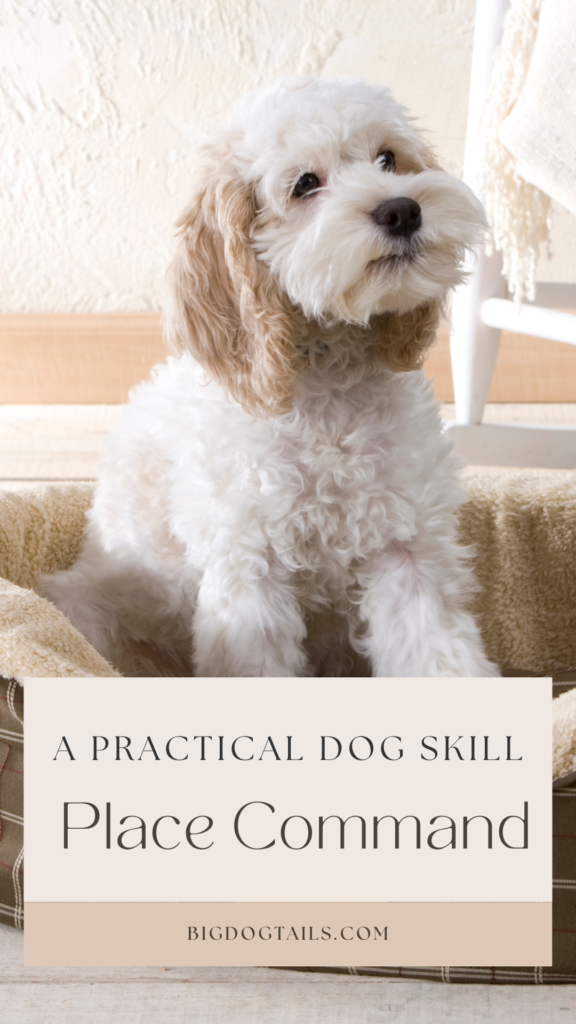
What is the Place command?
By telling the dog “Place,” you are instructing the dog to go to his designated place and wait there until you release him. He can sit or lay down while he waits. Some people designate a corner of a room as a place command, or their crate. But I prefer to leave the crate for a separate command called “Kennel up.” I use Ezra’s dog cot for the place command. Whichever you decide, you should pick a place that your pup likes and will be comfortable in.
Why should I train my dog the Place command?
This is a great command that you can teach your puppy or any dog with behavioral issues. The place command can help you if:
- You have a dog that resource guards.
- You have a dog that gets too excited and jumpy for visitors.
- For whatever reason, your house is feeling hectic and you need your dog to stay out of the way and chill down.
4 Super Simple Steps to Training Place
At the start, all you need is your a regular leash, treats, and a decision on your dog’s Place. As you make progress on this skill, grab a long line to help with gaining distance. To add distraction, I recommend practicing with some friends or downloading door bell/door knock audio files on your phone.
As you add distraction and practice with your dog, you may need to change your treats to get the most effective results.
Grab your leash and treats – let’s get started!
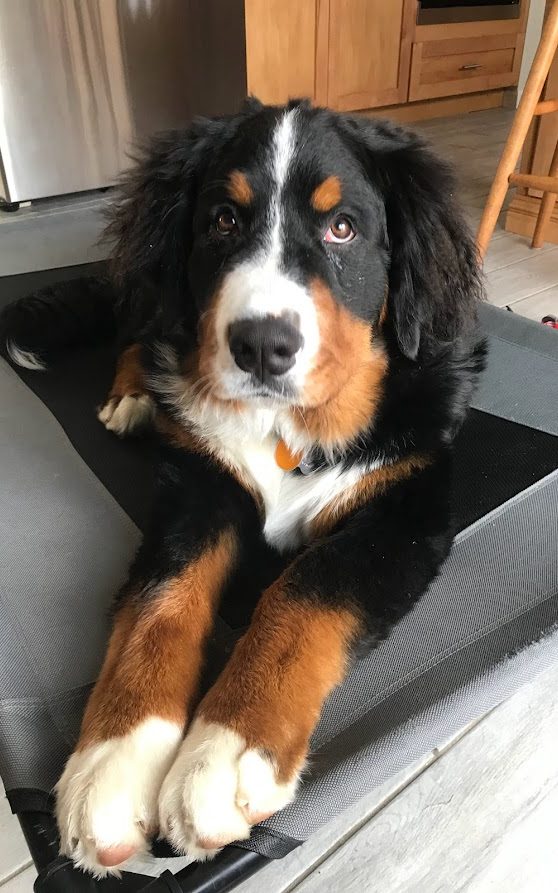
Step 1: Leash your dog, guide him to his Place.
- Walk with your pup towards his place. He will likely hop right there on his own.
- Once he does, start tossing treats all around his place. He will be standing and eating as many treats as possible. Do this for about a minute, then stop tossing treats.
- Once he’s done eating the treats, walk him off his place. Take a few steps away, then turn around and guide him back to his place.
- Repeat guiding him to his place, tossing treats, and then walking off a couple more times. As you repeat the skill, say the word “place” over and over again as you toss treats. When you leave his place, say “break” before he walks off.
When you break the dog, you are freeing the dog to do whatever he wants. Until then, he must stay in place.
Step 2: Add duration.
I find that getting your dog onto his place and staying there for a specific amount of time is more important in the beginning then teaching him to go to his place from a long distance. In my experience, a dog still in training will not think about his place if it’s out of sight, but if you walk him to his place he will hop right on it. But feel free to switch step 2 and 3 as needed.
- After practicing step 1 a few times, walk off his place and stand nearby it.
- Then say the word “place.” Don’t move until your dog does. Wait for him to think about it. He is probably trying to figure out what it is you want him to do, and give him space for that.
- If he moves onto his place, mark the behavior, praise, and pay with a treat. If he doesn’t move onto his place after a couple minutes, guide him towards it. Still mark, praise, and pay.
- Then break your dog and walk him off his place.
- Then repeat it a few times until he gets the hand of it. Then I would end the session for the day and practice this over the next couple days.
- Once it seems like second nature, increase the duration of time your dog spends in his place. Do this by getting him on his place and standing next to him for 5 seconds. Then say break to free your dog and walk him off his place.
- If he tries to break before you give him the command do, just tell him No and guide him back onto his place.
- Keep practicing this until he gets the hang of it. Then increase the time to 10 seconds, then 15 seconds.
If you are having a hard time increasing the duration, I recommend giving a long lasting treat to keep him occupied. Stay in the room to break him before he gets up on his own.
Step 3: Add distance.
- Grab your long line, and repeat step 2, except add a couple more feet in between you and the Place.
- Then say the word “place.” Don’t move until your dog does. Wait for him to think about it. He is probably trying to figure out what it is you want him to do, and give him space for that.
- If he moves onto his place, mark the behavior, praise, and pay with a treat. If he doesn’t move onto his place after a couple minutes, guide him towards it. Still mark, praise, and pay.
- Then break your dog and walk him off his place. At this point, don’t worry about duration.
- Repeat a few more times, then begin adding duration. If you need to, start at 5 seconds and work your way up.
- Once your dog is getting the hang of it, add more distance. Again, as you add distance, don’t worry about duration right away. Add in more duration after you see success at this new distance.
- Keep practicing with the long line for 5-7 days. Try to make it the full length of the long line.
- Try if off-leash after you see success with the long line. But if your dog makes mistakes twice in a row, put the leash back on and guide him. Keep practicing a few more times before going off-leash again.

Step 4: Add distractions.
When you begin to add distractions, you might have to go back to putting a regular leash back on your dog. That’s OK. Don’t get discouraged. Your dog just needs a little reminder, and that’s what the leash is for. When you begin to see success, you can try taking off the leash entirely and see how he does. But remember, if you see two mistakes in a row, go back to putting the leash on and guiding him.
- With a friend or on your own, ring the door bell or knock on the door. Then give the command, and your dog should get on his place. Wait and watch him for a minute to see if he does it. If he doesn’t, walk with him to his place and see if he hops on. If he does, mark, reward, and praise.
- Break the dog. Repeat this until he gets the hang of it. If he isn’t getting it or isn’t following you to his place, that’s OK. Put the leash on to help guide him.
- Now let’s add more distraction. After you say place, start to open the door.
- Your dog should still be going to his place. If he doesn’t, say no and guide him to his place. Then reward. Go back to opening the door, and if he moves off his place, say no and guide him back again.
- This is going to be hard. But keep repeating it until he you tell him place and he stays there until you open the door fully. Break him each time after you open the door.
- Add more distraction by adding a visitor. Your dog should stay in his place, even with guests entering your home until you break him.
- If you are doing this with planned guests, I recommend putting a leash on him so you can quickly grab and put him back in his place until he does this successfully on his own.
- I also recommend giving a long lasting treat for the first few times as incentive to stay put.
- This is the hardest part. Keep practicing until he gets it down pat. Don’t be afraid to go back to an easier milestone to practice a few times until he’s a pro at it.
Conclusion
This is a great skill to learn for basic behavior modification. It can prevent your dog from impolite greetings to any visitors in your home, or stop your dog from resource guarding. This is because by telling your dog to go to his place, you’re telling him to take a chill pill and settle down in his safe space.
The basics of this skill are:
- Identify what his “place” will be. I use Ezra’s dog cot. Find something that he loves being on and will be comfortable staying there for several minutes.
- Associate it with treats, and add the place command.
- Add duration with an implied stay, freeing the dog when he’s allowed up.
- Add distance leveraging a long line.
- Then add distractions like door bells, opening the door, and planned guests.
- Practice makes perfect! Practice this regularly for several weeks until he has it down like clockwork.
What behaviors do you think you can improve by using the Place command? Comment and let me know!

